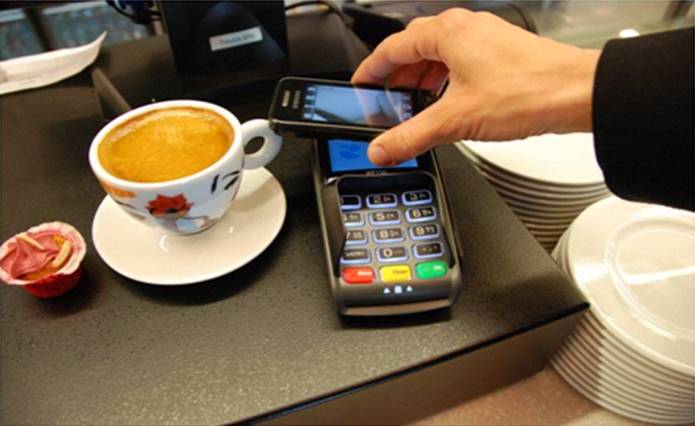It seems that for any major tech development, both open systems and closed systems are in play and in opposition.
In the hotly contested mobile payments space, once again we are seeing this debate manifest. Except in this context, it is a matter of open vs. closed loop mobile payments solutions.
Before we dive deeper into the advantages and disadvantages of these respective options, we’re going to define what exactly is meant by “open loop” and “closed loop” in the mobile payments context.
Open Loop Mobile Payments
Open loop mobile payment solutions allow users to pay at many different locations from one centralized digital wallet. Unlike their closed counterparts, open platforms are connected to a personal account – a credit card for example – and don’t require a prepaid amount to exist in the system that needs to be topped up when the money runs out. An easier way to understand it is to think of closed payments as a gift card and open payments as a credit card.
Closed Loop Mobile Payments
In a general sense, closed loop mobile payments are those that enable consumers to load money into a spending account that is linked to a payment device – for example, a gift card for a specific company.
Closed loop mobile payment solutions enable customers to manage their gift card or payment account via their mobile devices. Customers can check their balances, add money, and pay using a mobile application rather than a physical card.
Branded mobile payment/loyalty solutions are closed loop mobile payment systems, for example, the TimmyMe application for Tim Hortons or the Starbucks mobile app. These solutions allow customers to pay via their mobile devices only at a specific vendor and only against an established account balance (many of these solutions offer automatic account top-up options).
Open Loop Vs. Closed Loop Mobile Payments: Advantages and Disadvantages
Open Loop – Advantages
James Duthie of DT makes a fairly compelling argument for open loop solutions, citing the historical success that open systems have had. His argument centres on one key component that contributes to this success – scale. According to Duthie, in every case where open platforms have outperformed closed systems, it is their very openness that has allowed them to rapidly scale functionality, and thus value, for end users.
The value end users gain from open-loop mobile payments, to put it simply, is convenience. In theory, a single, centralized digital wallet that allows you to pay anywhere, for anything, from your smartphone is much easier than having to manage multiple, fragmented proprietary applications for each and every vendor.
Open Loop – Disadvantages
The open loop system is great for end users in theory, but there are downfalls. Though there are clear market leaders, there is still quite a bit of fragmentation, particularly on the merchant side where adoption has been less than stellar, and for good reason.
From a merchant perspective, open mobile wallets don’t really carry many advantages. They threaten loyalty programs and negate the ancillary benefits of closed loop systems, such as control over customer data. Consequently, most merchants aren’t racing to accept payments via open-loop mobile wallets, which means that – at least in the current landscape – the convenience to end users hasn’t yet been realized.
This may potentially change as the creators of these open wallets attempt to find ways to improve the benefits not just to end users, but also to merchants, thus incentivizing them to accept payments via this avenue.
Closed Loop – Advantages
Closed loop mobile payments systems can benefit both consumers and merchants alike, which is why many companies have not only opted to implement them but have also seen them succeed.
From a merchant perspective, closed loop payments systems carry the following advantages:
- ability to capture big data on customer transactions, including customer insights, buying habits, popular items, and even return on mobile marketing campaigns
- internal payment processing which can lower merchant costs
- increase in customer loyalty through integration of loyalty programs within the application
Essentially, proprietary closed loop systems offer merchants the ability to maintain ownership over the entire merchant/customer process, which at this point, open systems can’t provide.
From a customer perspective, closed loop mobile payments systems also offer significant benefits, including purchase/loyalty incentives, pre-ordering and balance top-up ability and faster time to check-out. They make the customer experience with a particular merchant that much more convenient.
Closed Loop – Disadvantages
While closed loop systems make the customer experience with a single vendor more convenient, they also require that customers acquire and manage a payment app for each vendor, rather than having one central platform from which they can make purchases anywhere. So, if a user wanted to use their phone to pay at 10 different retailers – each with its own proprietary system – they would need to manage 10 separate apps.
As mobile payments become more popular, and consumers expect to be able to pay with their mobile devices, having only closed loop mobile payment systems available could actually deter them from using mobile to complete transactions.
A Hybrid Solution?
There are a variety of directions in which mobile payments can go. We could see merchants continuing to opt for closed loop systems, or we could see open-loop mobile wallets emerge as the preferred choice. But the evolution of mobile payments will likely not transpire with a clear winner. More likely is the coexistence of these options.
Digital Transactions magazine points out that most vendors are interested in closed loop mobile wallets over open loop options due to their ancillary benefits. But merchants aren’t the only interested parties. Companies that have developed open loop mobile wallets, banks, credit card issuers, etc. – these bodies also have a stake in the future of mobile payments.
For mobile payments to become widespread, there will need to be an infrastructure that works for all of the interested parties, but at the same time provides consumers with security and convenience. This may mean that merchants begin to accept payments via both open and closed loop mobile wallets. Or we may see digital wallet creators like PayPal and Google work with merchants to develop creative solutions that allow the benefits of closed systems, such as loyalty programs, to be integrated into their mobile wallets. Google is already pursuing this avenue with the recent announcement of Android Pay, which will allow developers more control by offering an API, as is PayPal with select merchant partnerships.
As it stands, there is no clear-cut, universal method. What ends up transpiring will be the result of all interested parties continuing to try and find a framework that is mutually beneficial, but also consumer-friendly.







